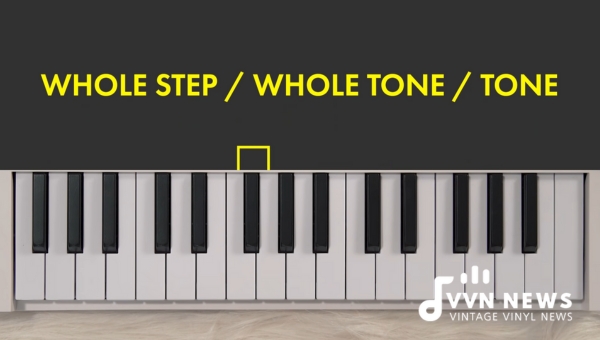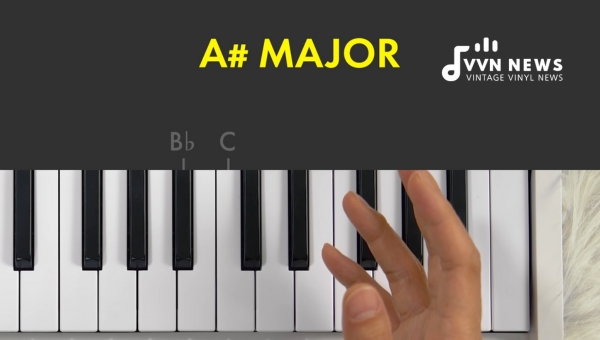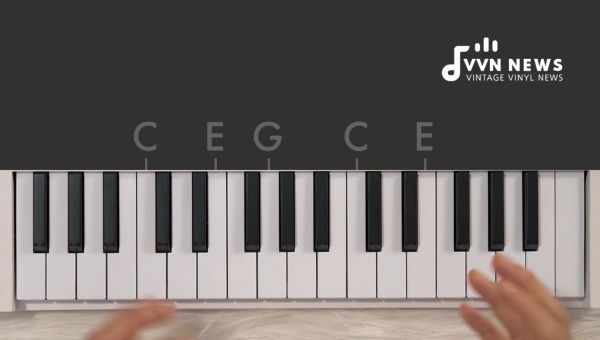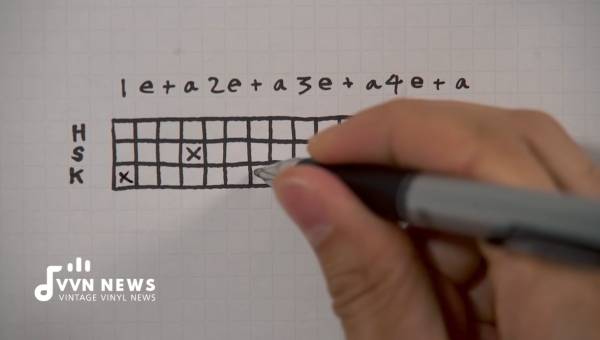Are you a music enthusiast looking to deepen your understanding of music theory? If so, you’ve come to the right place.
Welcome to A Music Theory Guide To C Minor Chords. In this blog post, I will be delving into the fascinating world of C minor chords, explaining their components, and providing practical tips for incorporating them into your musical arrangements.
Whether you’re a beginner musician or a seasoned professional, this guide will provide you with valuable insights into the fundamentals of C minor chords.
Before we dive into the specifics, let’s briefly explore why understanding music theory is important.
Music theory serves as the foundation for any musician’s craft. It helps us understand how different musical elements work together harmoniously and enables us to communicate effectively with other musicians.
By gaining a deeper knowledge of chords like C minor, we can unlock endless possibilities for creativity and expression in our compositions. So, without further ado, let’s embark on an exploration of C minor chords!
What Are the Basic Chords in C Minor?
When exploring the world of C minor chords, it’s important to start with the basics. The C minor scale consists of the following notes: C, D, Eb, F, G, Ab, and Bb. These notes form the foundation for building chords in the key of C minor.
The basic chords in C minor include:
- C minor chord (C-Eb-G): This is the root chord and serves as the foundation for other chords in C minor.
- D diminished chord (D-F-Ab): The second chord in the key creates a unique and often haunting sound.
- Eb major chord (Eb-G-Bb): A major chord that adds brightness to the otherwise melancholic scale.
- F minor chord (F-Ab-C): A common chord used in various musical genres to add depth and emotion.
- G minor chord (G-Bb-D): Another commonly used chord that adds richness to compositions in C minor.
- Ab major chord (Ab-C-Eb): A major chord that introduces a sense of resolution and stability.
- Bb major chord (Bb-D-F): The final basic chord in C minor that helps create a full-bodied sound.
Understanding these basic chords allows you to experiment with different combinations and progressions while composing or improvising music in C minor.
How Do Seventh Chords Work in C Minor?
Seventh chords play a vital role in adding complexity and color to musical compositions. In C minor, the seventh chords can be built upon each of the basic chords mentioned earlier. Let’s explore how seventh chords work in C minor:
- C minor seventh chord (C-Eb-G-Bb): This chord is formed by adding the seventh note of the C minor scale, Bb, to the C minor triad. The Cm7 chord has a rich and melancholic sound, often used in jazz and blues genres.
- D diminished seventh chord (D-F-Ab-Bbb): By adding one more note to the diminished triad, we get a diminished seventh chord. In this case, the seventh note is Bbb (enhanced by double flat). The Ddim7 chord creates tension and instability and is commonly used as a passing chord or for creating suspenseful moments.
- Eb major seventh chord (Eb-G-Bb-D): Adding the maj7 interval to an Eb major triad gives us an Ebmaj7 chord. This chord has a bright and uplifting quality, well-suited for creating dreamy or nostalgic atmospheres.
- F minor seventh chord (F-Ab-C-Eb): Similar to the Cm7, this chord adds the seventh note of F minor scale, Eb, to create an Fm7 sound. The Fm7 adds depth and warmth to compositions in C minor.
- G minor seventh chord (G-Bb-D-F): By extending the Gm triad with the added note F, we form Gm7 – a versatile and widely used chord for its mellow yet expressive character.
- Ab major seventh chord (Ab-C-Eb-G): Building on an Ab major triad with an added maj7 interval results in Abmaj7. This chord brings a sense of resolution and stability, while still maintaining an overall lush and luxurious quality.
- Bb dominant seventh chord (Bb-D-F-Ab): The Bb7 chord gives a bluesy and dominant sound to compositions in the key of C minor. It’s often used as a secondary dominant leading to the Eb major chord.
Seventh chords provide a harmonic richness that can transform the mood and vibe of your compositions in C minor. Experimenting with these chords will help you discover new sounds and expand your musical palette.
Also Read: B Minor Triad [Master Chord Progression In Just Minutes]
What Are Common Chord Progressions in C Minor?

Chord progressions are the backbone of any musical composition, providing a sense of movement and structure to your music. In C minor, there are several commonly used chord progressions that can add depth and emotion to your compositions.
i – iv – v
One of the most common chord progressions in C minor is the i – iv – v progression. This progression is formed by using the first (Cm), fourth (Fm), and fifth (Gm) chords in the key of C minor. The melancholic nature of these chords creates a sense of longing and sadness in your music.
i – VII – VI
Another popular chord progression is the i – VII – VI progression. This progression involves using the first (Cm), seventh (Bb), and sixth (Ab) chords in the key of C minor. The combination of these chords creates a dramatic and powerful sound, often used in ballads or emotional pieces.
i – III-VI
The i – III-VI progressions is another effective way to explore different emotions within the key of C minor. This progression utilizes the first (Cm), third (Eb), and sixth (Ab) chords. It offers a sense of tension and release, allowing you to build intensity throughout your composition.
vii°7/V- V/V7- V
For those looking for a more complex and modern sound, the vii°7/V- V/V7- V progression is an excellent choice. This four-chord sequence involves using diminished seventh chords, leading into dominant seventh chords before resolving on the major fifth chord. This progression adds tension and suspense before providing a satisfying resolution.
By experimenting with these common chord progressions or combining them creatively, you can create beautiful musical arrangements that captivate listeners.
Also Read: A Flat Minor Triad [Guide to Unusual Guitar Chords]
Training Your Ear with C Minor Chords
Training your ear to recognize and differentiate between different chords is a crucial skill for any musician. It allows you to understand better and appreciate the music you hear, as well as helping you in composing your own melodies. Here are some effective ways to train your ear specifically with C minor chords:
Familiarize Yourself with C Minor Chords
Start by listening to songs or pieces that prominently feature C minor chords. This will help you become accustomed to their unique sound and characteristics. Pay attention to how they create a melancholic or somber mood in the music.
Practice Singing the Notes of C Minor Chords
Singing the individual notes of a C minor chord can help you develop a strong aural connection with them. Start with the root note (C) and then sing the other two notes (Eb and G) in succession, focusing on their specific pitch and tone.
Experiment with Different Inversions
Inversions are re-arrangements of the notes within a chord, where a note other than the root becomes the lowest note. Practice recognizing different inversions of C minor chords by listening closely to their distinct sound. Pay attention to how the inversion affects the overall mood of the chord progression.
Train Your Ear through Melodies
Transcribe melodies that utilize C minor chords, either from existing songs or original compositions. Start by identifying when a C minor chord is being played, then try to replicate those notes on your instrument or voice. This exercise will help you internalize the sound of C minor chords and develop better pitch recognition.
Play Chord Progressions in Various Keys
Once you feel comfortable identifying and playing C minor chords, expand your training by practicing them in different keys. This will refine your ability to recognize their unique characteristics across various musical contexts.
Ear training takes time and patience. Consistent practice and active listening will gradually improve your ability to identify C minor chords and other harmonic elements within music.
Incorporate these ear-training techniques into your regular practice routine, and you’ll find yourself becoming a more discerning musician with a deep appreciation for the nuances of C minor chords.
How Do You Play C Minor Chords on the Piano?

Playing C minor chords on the piano is an essential skill for any aspiring pianist. Follow these step-by-step instructions to master playing C minor chords:
- Understand the concept: A C minor chord consists of three notes: C, Eb, and G. These notes create a distinctive sound that adds depth and emotion to your music.
- Position your hands: Begin by placing your right hand in the middle of the keyboard with your thumb on middle C (C4). Spread your fingers out so that each finger rests naturally on a white key.
- Play the root note (C): With your right hand, press down on the C key (C4) using your thumb. This is the root note of the C minor chord.
- Add the third note (Eb): While holding down the root note, use your pinky finger to press down on the Eb key (Eb4), which is located on two white keys to the left of middle C.
- Include the fifth note (G): Keep holding down both the root and third notes, and now use your middle finger to play the G key (G4), which is located four white keys to the right of middle C.
- Play all three notes simultaneously: Now that you have positioned all three fingers correctly, press down on these three keys simultaneously: C, Eb, and G.
- Experiment with different inversions: Once you have mastered playing a basic C minor chord in its root position, try experimenting with different inversions by changing which note is at the bottom of the chord.
Remember to practice slowly at first and gradually increase your speed as you become more comfortable.
With consistent practice and patience, you will soon be able to play C minor chords effortlessly and incorporate them into your piano repertoire confidently.
Also Read: G Major Scales And Chords [Expand Your Musical Understandings]
How Are C Minor Chords Fingered on the Guitar?
Playing C minor chords on the guitar can be a rewarding experience and add depth to your musical repertoire.
Here’s a step-by-step guide, complete with finger placement and tabs, to help you quickly master the art of playing C minor chords:
- Cm Barre Chord (8th Fret): This is a commonly used form of playing the C minor chord on the guitar.
- Position your index finger across all strings at the 8th fret, barring them.
- Place your ring finger on the 10th fret of the A string.
- Press down your pinky finger on the 10th fret of the D string.
- Strum from the A string downwards, avoiding strumming the low E string.
- Cm Open Chord: An open chord version gives a different voicing compared to barre chords.
- Place your index finger on the 1st fret of the B string.
- Rest your ring finger on the 3rd fret of the A string.
- Keep other strings open or muted based on preference.
- Cm Power Chord: Power chords are versatile and widely used in rock and metal genres.
- Lay your index finger across all strings at 3rd fret, barring them.
- Position your ring finger on the 5th fret of the D string.
- Optionally, you can also include your pinky finger on the 5th fret of the G string for an additional power chord shape.
- Cm Triad Chord (Root Position): This version provides a smooth transition between different positions on the guitar neck.
- Press down your index finger across all strings at the third fret, barring them.
- Place middle finger over fourth-fret B-string
- Apply tension by using the ring finger over the fifth-fret D-string
- Strum from A string downward, being careful not to strum the low E string.
As you build muscle memory and finger strength, you can gradually increase the tempo of your chord progressions. Experiment with different strumming patterns and incorporate C minor chords into your favorite songs to further enhance your guitar skills.
What Are Chord Inversions and Why Are They Important?

Chord inversions are alternate ways of playing a chord, where the notes are rearranged so that a different note becomes the lowest or bass note.
In other words, instead of playing the root note as the lowest tone, we play one of the chord’s other notes as the lowest.
The concept of chord inversions adds depth, variety, and harmonic interest to musical compositions.
Understanding Chord Inversions
To understand chord inversions, let’s consider a basic C major triad consisting of the notes C-E-G. In its root position, C is the bass or lowest note. However, by rearranging the notes and placing E or G in the bass position, we create different chord inversions.
Root Position (C-E-G)
The root position is when the root note (C) is in the bass position. It creates a stable and familiar sound.
First Inversion (E-G-C)
In this inversion, we move the middle note (E) to become the bass note. This inversion introduces a sense of tension and can be used for melodic movement.
Second Inversion (G-C-E)
The second inversion occurs when we move both E and C above G. The highest note (G) now becomes the lowest tone.
This inversion creates an even greater sense of tension and often functions as a transitional chord before resolving to another.
Importance of Chord Inversions
Chord inversions play a crucial role in creating harmonic interest within a musical composition. Here are some reasons why they are important:
- Smooth Voice Leading: Chord inversions allow for smoother voice leading by minimizing large jumps between chords. This results in more fluid transitions and enhances overall musical flow.
- Enhanced Melodic Movement: Inversions provide opportunities for creating interesting melodic lines within chord progressions by changing which notes are in the bass position.
- Rich Harmony: By using inversions, you can add more layers and complexity to your music, making it sound fuller and richer.
- Bass Emphasis: Inversions allow you to highlight different tones in the bass, creating a unique foundation for your composition.
- Variation and Surprise: By incorporating chord inversions, you can break away from predictable harmonic patterns, adding variation and surprise to your musical arrangements.
Understanding and utilizing chord inversions effectively can elevate your musical compositions to new heights, capturing the attention of listeners and showcasing your creativity as a musician.
Also Read: D Major Chords [Unlock The Power Of Your Guitar]
How Can C Minor Chords Enhance Your Songwriting?
C minor chords have a unique ability to evoke a wide range of emotions within a musical composition.
Incorporating C minor chords into your songwriting can add depth, intensity, and complexity to your music. Here’s how:
Intensity and Emotion
C minor chords have a melancholic and somber quality that can convey deep emotions such as sadness, longing, or introspection.
By incorporating C minor chords into certain sections of your song, you can create moments of emotional intensity that resonate with listeners.
Contrast and Tension
C minor chords can be strategically placed to create contrast within your song. By juxtaposing the darker tones of C minor with brighter or major chords, you can build tension and create an impactful sonic experience for your audience.
Expressive Melodies
Melodies built around C minor chords have a distinct character that adds an element of expressiveness to your music.
This can be particularly effective when writing introspective ballads, dramatic compositions, or songs with introspective lyrics.
Harmonic Variety
Exploring the harmonic possibilities within C minor opens up a world of creative potential. You can experiment with chord progressions such as the I-IV-V pattern (Cm-Fm-Gm) or incorporate variations like the ii-V-I progression (Ddim-Gm-Cm), which adds layers of complexity and interest to your compositions.
Genre Flexibility
C minor is commonly used across various music genres such as classical, jazz, rock, pop, and more.
By incorporating C minor chords into your songwriting arsenal, you gain the versatility to explore different musical styles while maintaining a coherent tonal center.
Remember to experiment with rhythms, dynamics, and voicings when using C minor chords in your songwriting endeavors.
The goal is not only to showcase their inherent beauty but also to utilize them as tools for storytelling through music.
Artists Who Incorporate C Minor Chords in Their Songs

C minor chords have long been favored by musicians across various genres for their emotive and captivating qualities.
Let’s take a closer look at some well-known artists who have expertly used C minor chords in their songs.
Beethoven
As a master of classical music, Ludwig van Beethoven often utilized C minor chords to create a sense of drama and tension in his compositions.
One notable example is his Symphony No. 5, which begins with the iconic da-da-da-dum motif, centered around the C minor chord.
Nirvana
In the world of alternative rock, Kurt Cobain and his band Nirvana made powerful use of C minor chords.
In their hit song “Come as You Are,” the chorus features the haunting sound of a repeated C minor chord progression adding to the song’s overall intensity.
Alicia Keys
Alicia Keys, known for her soulful R&B style, often incorporates C minor chords into her music to evoke strong emotions.
In her hit ballad “Fallin’,” the main piano riff is centered around a descending Cm arpeggio that creates a melancholic atmosphere.
Ed Sheeran
Ed Sheeran, an acclaimed singer-songwriter, demonstrates his creativity with chord progressions in songs like “Give Me Love.”
The chorus features an impactful transition from A major to G# major, both relative major chords of C minor, adding depth and complexity to the composition.
Johann Sebastian Bach
Renowned composer Johann Sebastian Bach skillfully used C minor chords in his Baroque era compositions.
His famous Toccata and Fugue in D Minor showcases his mastery of counterpoint and intricate harmonic structures that include variations on the unstable nature of C minor.
These are just a few examples of the numerous artists who have embraced the expressive power of C minor chords.
By studying their works and incorporating similar techniques into your own compositions, you can tap into the evocative qualities that make C minor chords so captivating.
How Can You Practice and Master C Minor Chord Transitions?
Mastering chord transitions is a crucial skill for any musician. It allows you to seamlessly move between chords and maintain the flow of your music.
Here are some tips to help you practice and improve your C minor chord transitions:
- Start with Slow and Controlled Movements: Begin by practicing each chord individually, ensuring that you have a firm grip on the finger placement and the sound of each chord. Practice transitioning between two chords at a slow tempo, focusing on accuracy rather than speed.
- Use Metronome for Rhythm: Incorporating a metronome into your practice sessions can help you build a strong sense of rhythm and timing. Start at a slow tempo, gradually increasing the speed as you gain confidence.
- Visualize Finger Placement: Before moving to the next chord, visualize the positioning of your fingers on the fretboard or piano keys. This mental exercise helps train muscle memory and makes transitions smoother.
- Practice Common Chord Progressions: Identify common chord progressions that incorporate C minor chords, such as Cm – Fm – Gm – Cm or Cm – Ab – Eb – Bb. Focus on practicing these progressions repeatedly to build familiarity and muscle memory.
- Break Down Chord Transitions: If you’re struggling with specific transitions, break them down into smaller steps. Practice transitioning from one finger to another rather than trying to switch all fingers simultaneously.
- Utilize Open Chords: If you’re playing guitar, consider using open chords in addition to barre chords for C minor variations. Open chords can provide different voicings for the same chord and offer alternative options for smoother transitions.
- Experiment with Strumming Patterns: Try different strumming patterns while transitioning between chords in C minor. This can add variety to your playing style and make transitions feel more fluid.
- Record Yourself: Use a recording device or app to capture your practice sessions. By listening back, you can identify areas for improvement and track your progress over time.
Consistency and perseverance are key when practicing chord transitions. Take the time to refine your technique and make gradual improvements.
With regular practice, you’ll be able to master C minor chord transitions and effortlessly incorporate them into your musical performances.
FAQ About C minor chords
Can I use C minor chords in different musical genres?
Absolutely! While C minor chords are commonly associated with more somber and melancholic music, they can also be incorporated into a wide range of genres including pop, rock, jazz, and even electronic music.
How do I incorporate C minor chords into my songwriting?
There are many ways to incorporate C minor chords into your songwriting. You can use them as the main chord progression for a verse or chorus, or you can use them to add tension and contrast within your composition by transitioning from major to minor chords.
What are some popular songs that feature C minor chords?
Several popular songs utilize C minor chords to evoke a certain mood or emotion. Some notable examples include Adele’s “Someone Like You,” Johann Pachelbel’s “Canon in D,” and Radiohead’s “Creep.”
Do I have to play all the notes of a C minor chord at once?
No, you don’t have to play all the notes of a C minor chord simultaneously. You can play each note individually (arpeggiate) or experiment with playing different combinations of the chord’s notes to create unique melodic patterns.
Are there any variations of the C minor chord?
Yes, there are variations known as Cm7 (C-Eb-G-Bb) and Cm9 (C-Eb-G-Bb-D), which add additional notes for added complexity and richness in your compositions.
Conclusion
Understanding and mastering C minor chords can greatly enhance your musical compositions and arrangements.
By familiarizing yourself with the basic chords, exploring seventh chords, and experimenting with common chord progressions, you can create a variety of moods and emotions in your music.
Additionally, training your ear to recognize C minor chord progressions and practicing chord transitions will help you become a more proficient musician.
So, go ahead and dive into the captivating world of C minor chords – the possibilities are endless!








